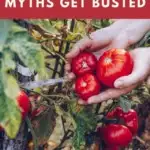
If I wrote a post with the title, “10 Secrets to Your Best Ever Green Bean Harvest,” I’ll bet most folks would keep scrolling. However, if I wrote a post about the “10 Secrets to Your Best Ever Tomato Harvest,” folks would sprain their thumb trying to stop scrolling so fast.
As tomato gardeners, we’re always on the hunt for that one thing that will give our tomato plants an edge.
We want to know the magical concoction of household ingredients that will give us tomatoes as big as bowling balls with a flavor unparalleled by anything you’ve ever grown in the dirt.
And we’ll try just about anything to see if it works.
But how many of these so-called miraculous tomato tips actually work?
Today I’m going to expose tomato tips that turn out to be tomato myths.
1. You Have to Let Tomatoes Ripen on the Vine for Good Flavor
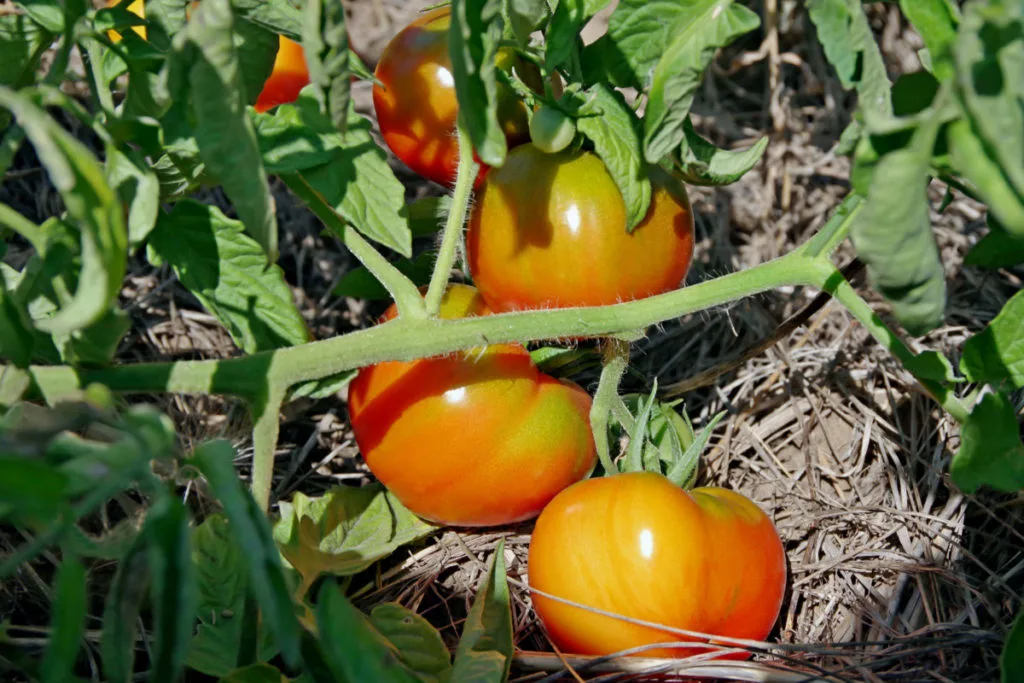
Hint – because it’s on this list, it’s simply not true. So, where does this myth come from – good ol’ pasty, pink, flavorless grocery store tomatoes.
You know the ones.
We’ve all come to equate tomatoes that have been picked underripe as flavorless thanks to our desire to have ‘fresh’ vegetables year-round no matter where we live.
However, that’s just not the case.
Tomatoes reach a certain point during growth where the exchange of nutrients and water from the plant to the fruit slows to almost nothing. This is due to a layer of cells in the stem that grow to slowly separate the fruit from the plant.
It’s called the ‘breaker point’ or ‘breaker stage.’
A tomato has reached the breaker point when its color begins to change from unripe green to its final color (red, yellow, purple, etc.) Somewhere around a third of the fruit will have begun to change color.
Once a tomato reaches the breaker point, it can be removed from the vine and ripen just fine, full of flavor, as it already has everything inside that it needs.
In fact, if your summer temps get too high (more than 78 degrees), you can ensure better-tasting tomatoes by picking them at the breaker stage and ripening them inside.
2. Use Aspirin Spray for Healthier More Pest-Resistant Tomatoes

Perhaps you’ve seen it on Facebook, a hack telling you to smash a couple of aspirin tablets and mix them with water to create this amazing cure-all for your tomatoes. Diseases – pow, bugs – destroyed, tons of tomatoes – okay, nobody wants an actual ton of tomatoes.
But you get the idea.
Scientists discovered in the lab that tomatoes exposed to salicylic acid develop a kind of stress-triggered resistance. It’s as if the tomato were put on high alert for an impending disease attack. This was all done in a very controlled environment with a specific disease.
Robert Pavlis over at Garden Myths helped get to the root of this myth. He followed it back to statements (her personal opinion, rather than research results) made by Martha McBurney, a Master Gardener at Rhode Island University, who tried using salicylic acid spray (not aspirin spray) on tomatoes. The media picked up her glowing opinion, and the rest is history.
Martha tried to replicate her initial experiment but got rather different results the next time around.
And while you could point out that aspirin contains salicylic acid, it contains acetylsalicylic acid. It’s also kind of important to remember that aspirin is toxic to tomatoes.
Robert also points out that the handful of experiments done elsewhere involve salicylic acid rather than aspirin. These were done in a lab setting, which is a very controlled and naturally disease and pest-resistant environment—nothing like growing out in the real world.
Spraying your tomatoes with aspirin doesn’t affect pest resistance, nor does it treat disease.
And most importantly, it’s probably good to mention that aspirin is toxic to tomatoes. So, if you go overboard with this mythical cure-all, you can end up killing your tomatoes.
Maybe save the aspirin for the headache you get after picking 47 tomato hornworms off of your plants.
3. You Have to Grow Paste Tomatoes for Sauce
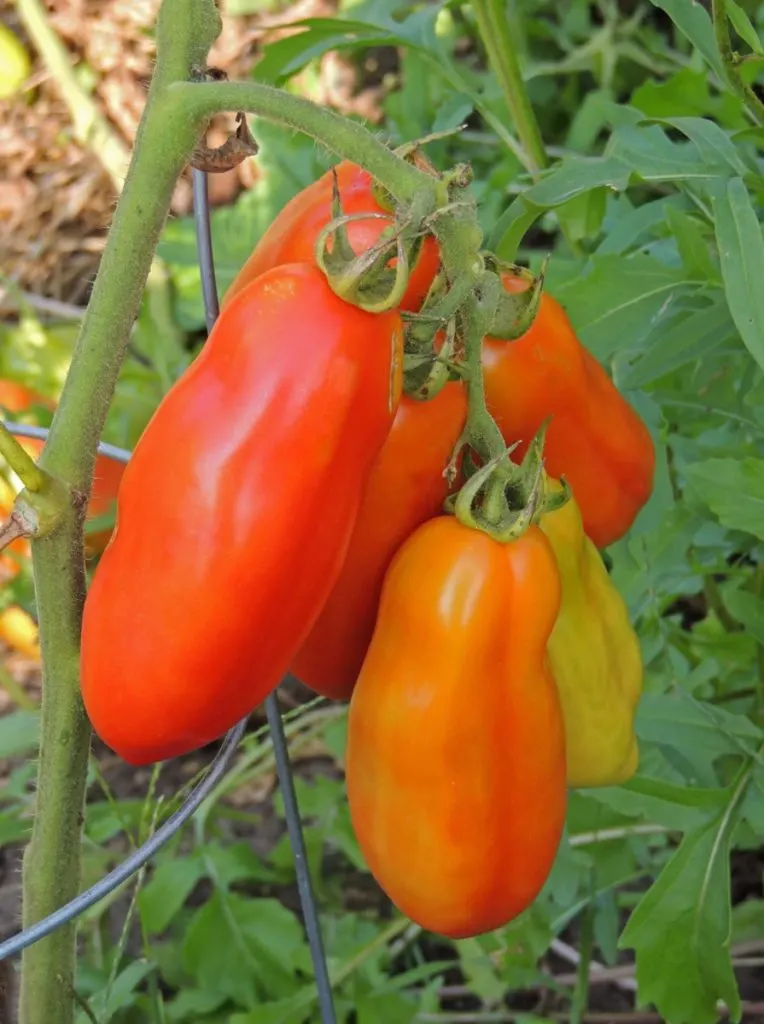
So, I know this post is all about myths, but I’m going to let you in on a little tomato growing tip here. I’m going to share the best tomato for making sauce.
But you can’t tell anybody.
Otherwise, the seeds will sell out next year.
Ready?
The absolute best, number-one tomato for making tomato sauce is whatever tomato variety you’re growing. Yup. Radical, I know. Shhh, don’t tell anyone.
Seriously, while paste tomatoes make a good sauce, you don’t have to use them exclusively.
Often the best sauces I’ve made over the years have been a jumble of whatever tomatoes happened to be on the counter at the moment.
4. Leaves Falling Off Your Plant Is a Sign of Disease
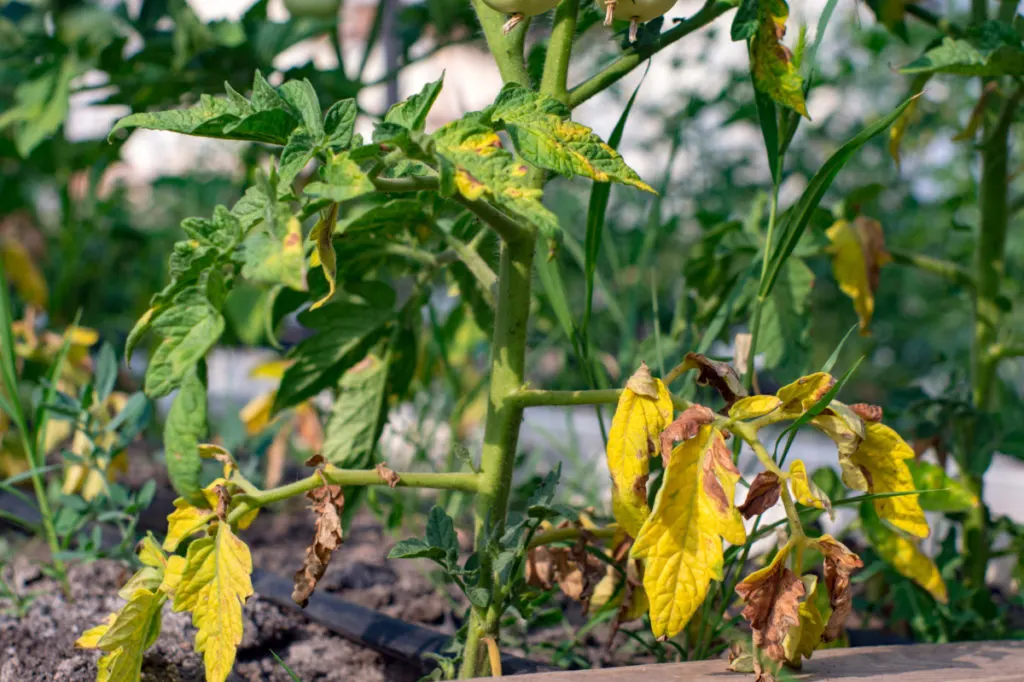
It’s always a little nerve-racking to find one of your plants looking less than ideal. We put so much time and energy into our gardens, with the hope that we’ll end up with healthy plants and big yields.
Once your tomato plants begin to fruit, most of the plant’s energy gets reserved for just that. As your tomato plant ages, less energy will go towards maintaining the foliage.
So, it’s perfectly natural for some of the leaves to dry up and fall off once your tomatoes have begun fruiting.
Of course, if you notice spots or defoliation before fruiting, or if it’s more than just a few leaves falling off, it may be time to take a closer look.
5. You Should Always Prune Off Suckers
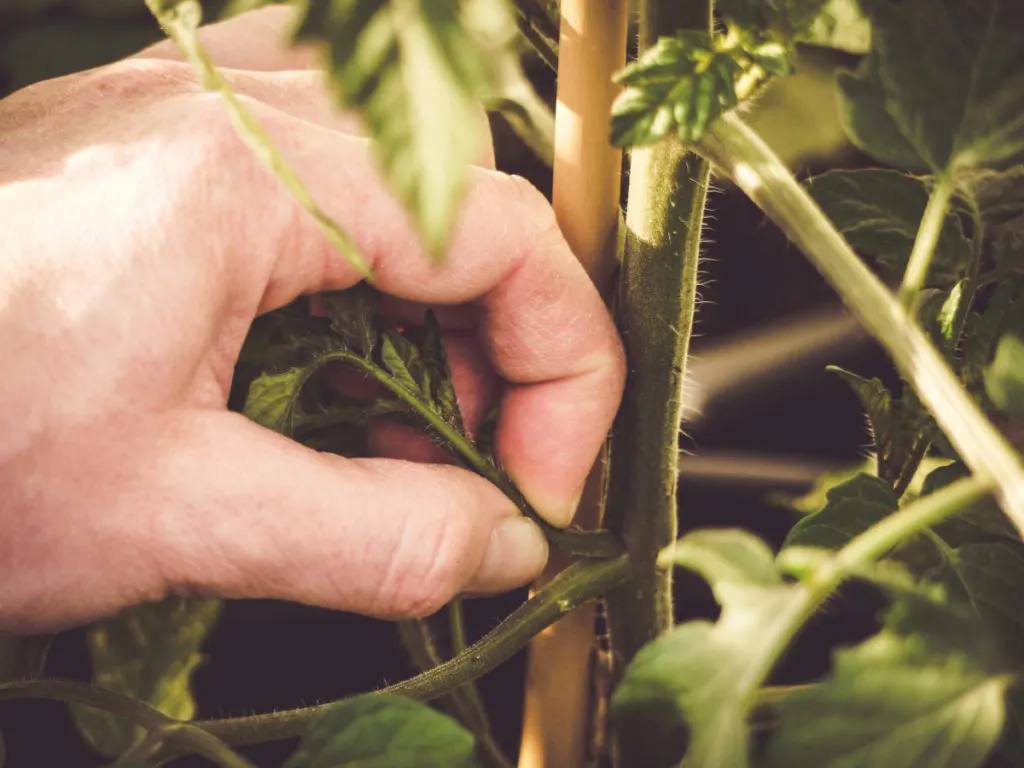
The myth usually states that pruning suckers give you more fruit.
Well, the thing is; eventually, those suckers do just that – grow tomatoes. The questions you need to ask before you take your pruning snips to your tomatoes are:
- Is my cultivar determinate or indeterminate?
- How long is my growing season?
- How hot is my growing season?
When growing determinate varieties, it’s counterintuitive to cut off suckers. The plant has a finished growing size. Leave the suckers; you’ll end up with more fruit.
If you have a nice long growing season, then, by all means, leave some of the suckers on. Again, these will grow and produce more fruit. However, if you live in an area with a shorter growing season, it makes more sense to trim off suckers, requiring more energy and a longer time to produce fruit.
Tomatoes do well in warm climates, but your fruit becomes susceptible to sunscald if it gets too hot. An easy way to prevent sunscald in hot climates is to let some of those suckers grow and provide shade for the developing fruit.
Then again, if you live in a cooler climate or a climate that gets a lot of rain, it makes sense to prune out some space in your plants for better air circulation.
6. Tomatoes are Heavy Feeders
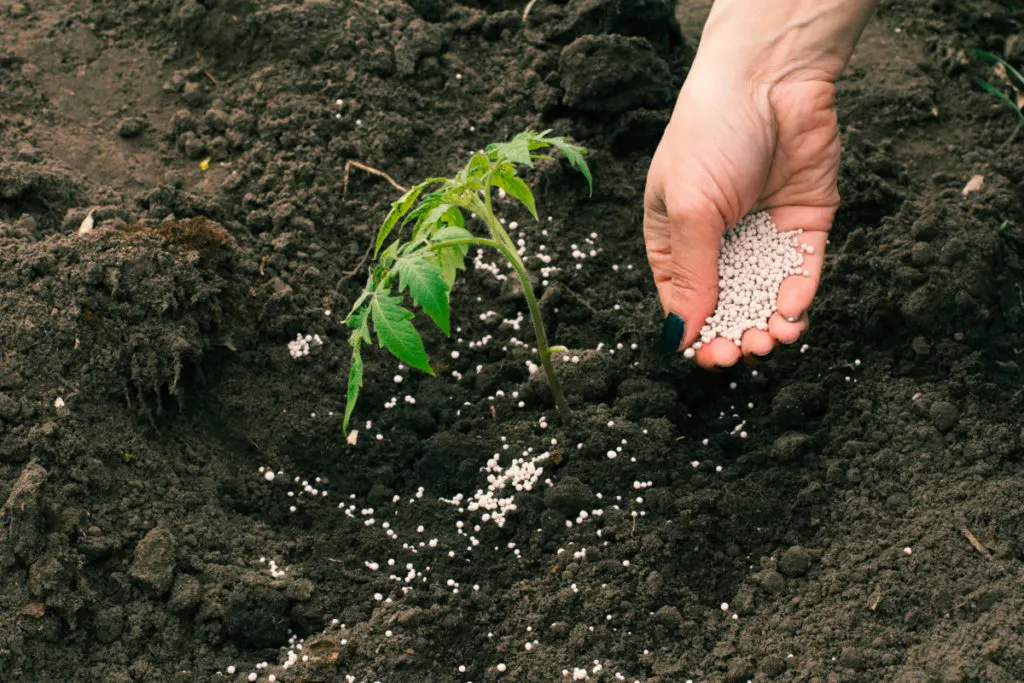
Too often, folks go crazy with the fertilizer and end up with a gorgeous leafy, green plant and no tomatoes. While tomatoes do require fertilizing to do well, they really only need it when they’re first planted and again when they begin to flower.
After that, they’re pretty much set for the season.
Rather than going heavy-handed on the fertilizer, what is more important is the kind of fertilizer you use and when you use it. Tomatoes do best with a fertilizer with plenty of phosphorus and calcium, applied as previously mentioned when you first plant and when they begin to flower.
7. Adding Eggshells to the Soil Will Prevent Blossom End Rot
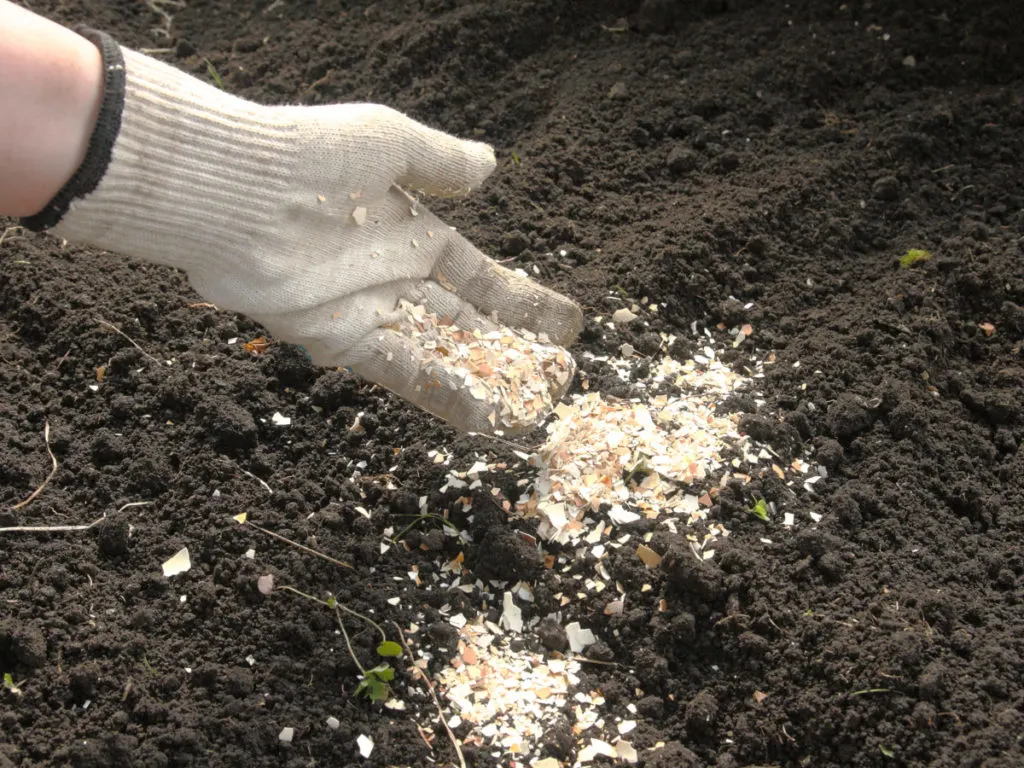
The problem with this myth is that it comes from the idea that there isn’t enough calcium in the soil. Whether you use a growing mix and fertilize or you grow directly in the soil, there’s plenty of calcium there.
The issue is the tomatoes are having trouble accessing it.
The best way to prevent blossom end rot is consistent watering. Having continued access to water is what allows your tomato plants to get the calcium in the soil to the fruit.
It’s better to water lighter more regularly than to go long stretches between watering and always water tomatoes at the soil level rather than overhead.
Then, there’s always that pesky issue about the time needed for eggshells to break down, so the calcium in them is made available in the soil. If you want to put those eggshells to good use, toss them in your compost. Then add your compost to your tomatoes.
8. You Have to Ferment Tomato Seeds If You’re Going to Save Them
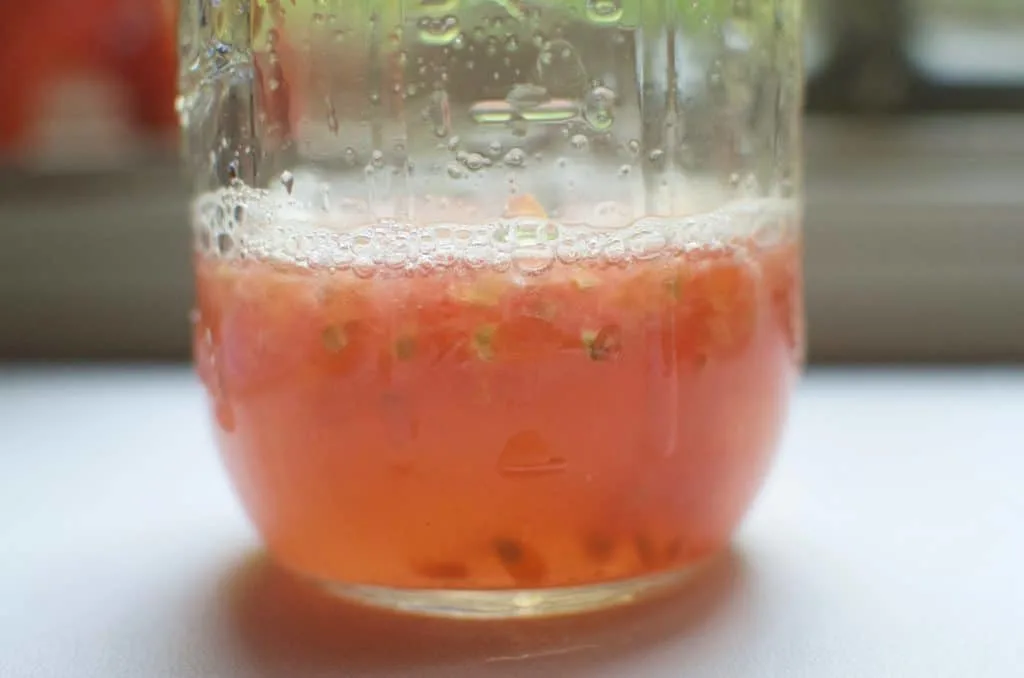
There are so many gardening myths out there, where if you take a moment and think about them, they dispel themselves. This is one of them.
If you’ve ever grown tomatoes, then you know next year, you’ll probably have a volunteer plant or two pop up in your garden or compost pile even though you didn’t take the time to ferment any of the seeds.
The idea behind fermentation is to remove the sticky gel-sac that surrounds each tomato seed. There’s a lot of fuss made about this gel-sac in seed fermenting articles – it prevents germination if it’s left intact, it will cause the seeds to become moldy, etc.
Psst.
You don’t need to ferment your tomato seeds to have successful germination next spring, and no, you don’t need to remove the gel-sac either.
Many, many gardeners do nothing other than wash and air dry their seeds, or rub off the gel-sac if they’re feeling industrious.
There are even a whole bunch of super lazy tomato growers that simply plant tomato slices.
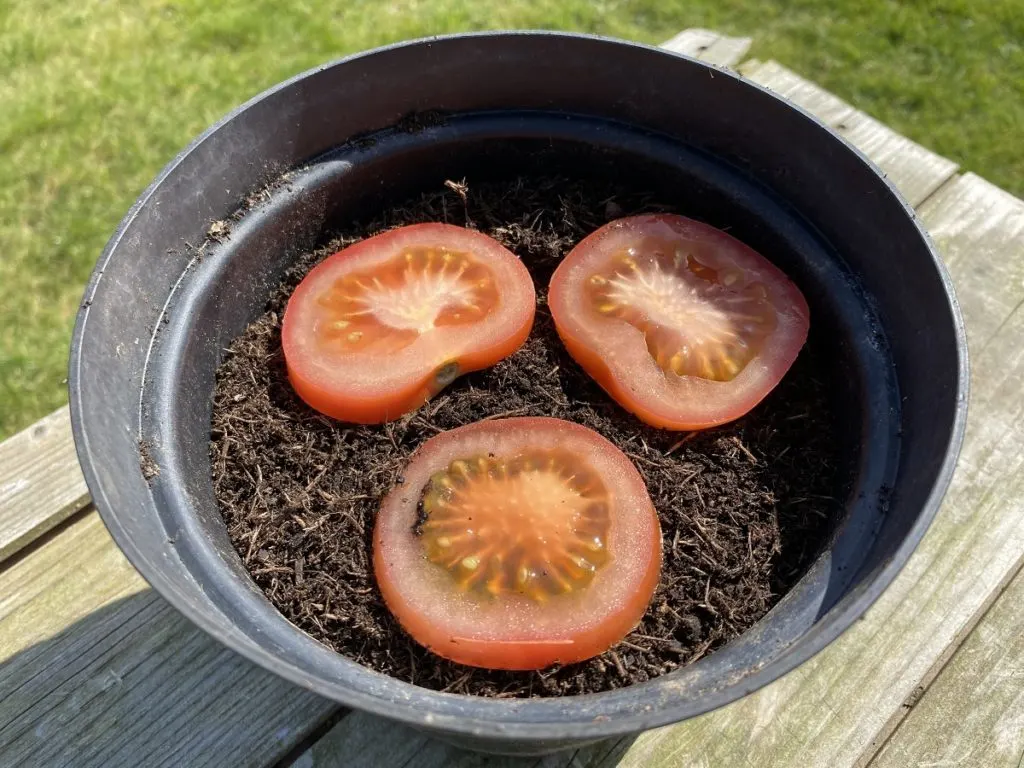
I’ve always just rubbed the gel-sac off and saved the seeds. Later in my gardening life, I learned I was “doing it wrong” from a friend who told me I needed to ferment the seeds or they wouldn’t grow. I kept thinking, “What are you talking about? My seeds germinate just fine every year.”
If you’ve always fermented your seeds, by all means, keep going. If it works for you, there’s no need to stop.
9. Don’t Refrigerate Your Tomatoes
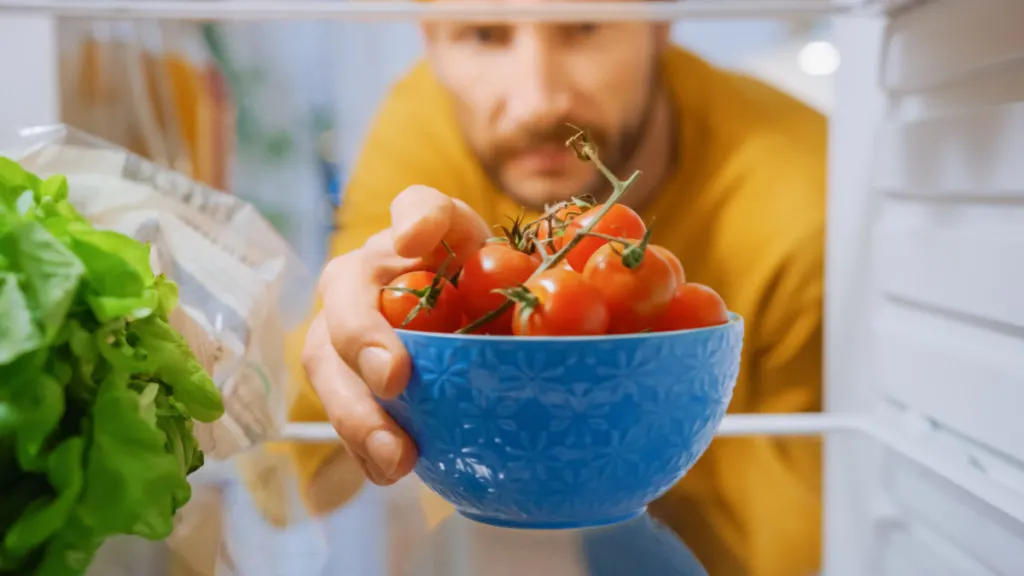
Oh, I’ll bet you’ve heard this one for ages. Or maybe you’re even one of those folks who admonishes friends and family when you see red tomatoes peeking out of someone’s crisper drawer.
The idea has always been that refrigeration causes the cells of the tomato to rupture, and the cold kills off enzymes (which give a tomato its flavor).
And after all of the hard work you’ve done to grow them, who wants bland tomatoes?
Well, it turns out we admonishers were wrong.
More and more cooks have begun challenging this idea. And the findings are in favor of refrigeration. Not only does refrigerating fully ripened tomatoes add to their shelf-life, but it has no adverse effects on the flavor.
This advice should come with the caveat that this only applies to ripe tomatoes; unripe tomatoes should remain at room temperature to complete their ripening. And the best results are always achieved by placing cut tomatoes in an airtight container.
Well, I think that’s enough myth-busting for one day.
I hope you’ve found something here that you can use or try this season when you’re out tending to your tomatoes.
Before you take to the comments with cries of, “But I’ve always done it this way!” or “Hmm, I do that, and it seems to work for me,” let me stop you.
That’s the beauty of growing your own food.
We can dabble; we can try new things. Sometimes they work, sometimes they don’t. What I do may work just fine for me but may be a disaster for you. Gardening should be enjoyable.
At the end of the day, if you like putting eggshells in the bottom of your planting hole, trimming every sucker you find, and leaving your tomatoes on the vine to ripen – go for it.
It’s your garden.
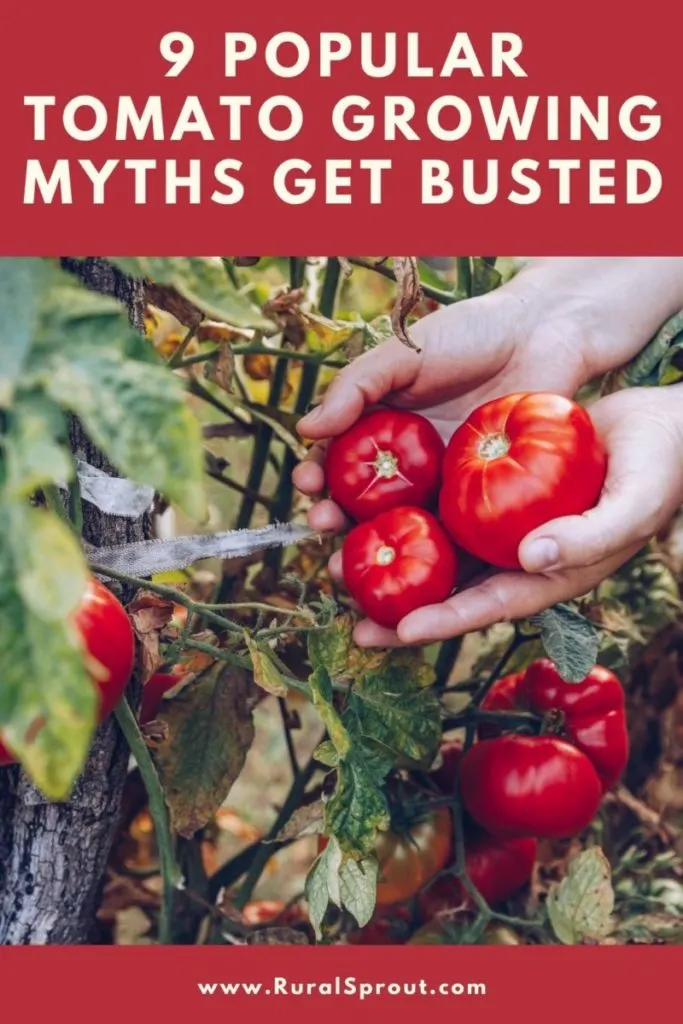
Read Next:

Get the famous Rural Sprout newsletter delivered to your inbox.
Including Sunday musings from our editor, Tracey, as well as “What’s Up Wednesday” our roundup of what’s in season and new article updates and alerts.


